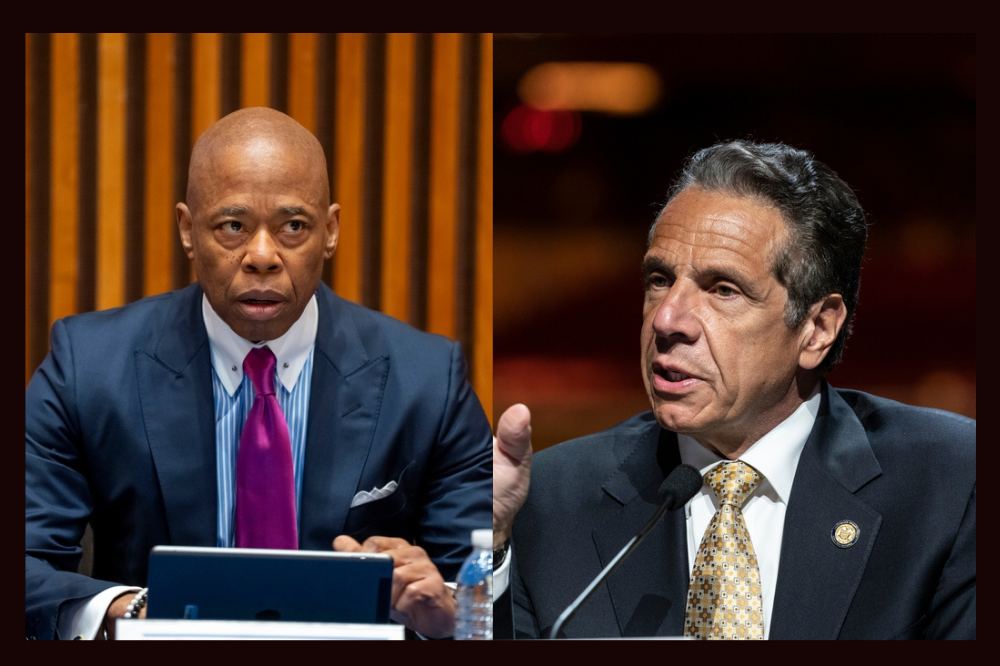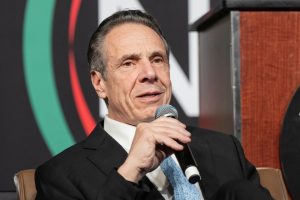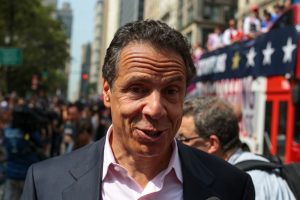Editorial By Brian Figeroux, Esq., New Black Voices, The Immigrant’s Journal, Caribbean American Weekly and Workers’ World Today | Editorial credit: Ron Adar & lev radin / shutterstock.com
New York, NY – May 7, 2025 – The already turbulent waters of New York City politics have been further agitated by seismic decisions from two prominent figures: Mayor Eric Adams, a Black Democrat, and former Governor Andrew Cuomo, a White Democrat. Both men have recently signaled intentions to appear on the November 2025 mayoral ballot as independents, moves that sidestep or supplement the traditional Democratic primary process. These choices, born from vastly different circumstances, have ignited a fierce debate about political ethics, party loyalty, strategic calculations, and the intricate, often fraught, racial dynamics within the Democratic coalition.
Mayor Eric Adams: An Independent Gambit Amidst Ethical Storms
Mayor Eric Adams’ path to an independent candidacy for re-election is paved with the challenging realities of his first term. On April 3, 2025, Adams announced he would forgo the Democratic primary and seek a second term as an independent. This decision followed a period of intense scrutiny, including a federal corruption indictment in September 2024 related to his 2021 campaign. While the Department of Justice initially moved to dismiss these charges without prejudice in February 2025, a federal judge ultimately dismissed the indictment with prejudice in April 2025, meaning the charges cannot be refiled.
Despite this legal resolution, the investigations and indictment have undeniably taken a toll on Adams’ mayoralty, contributing to record-low approval ratings. His tenure has been marked by controversies over his tough-on-crime policies, handling of the migrant crisis, and perceived closeness to Republican figures, leading to speculation about a strong left-wing primary challenge.
Framed by the user as an “issue of ethics,” Adams’ decision to run as an independent can be seen as a strategic retreat from a potentially bruising and unfavorable Democratic primary. Political analysts suggest this move gives his beleaguered campaign “new life,” allowing him to appeal directly to the general electorate without first winning over a skeptical Democratic base. Adams, who insists he remains a Democrat, is reportedly planning to run on the “Safe Streets, Affordable City” ballot line. This mirrors the historic 1969 run of Mayor John Lindsay, who won re-election as an independent after losing the Republican primary. However, Adams faces an uphill battle, with polls indicating limited support for an independent bid even before his formal announcement.
Governor Andrew Cuomo: Hedging Bets with a Dual-Track Mayoral Ambition
In a parallel yet distinct maneuver, former Governor Andrew Cuomo, who resigned in 2021 amidst multiple sexual harassment allegations (which he denies), announced on May 6, 2025, that he would run for mayor on a newly created “Fight and Deliver Party” line in the November general election. This is particularly noteworthy because Cuomo simultaneously remains a candidate in the Democratic primary, where polls from March 2025 showed him as the front-runner.
Cuomo’s strategy is a clear example of “hedging his bets.” While enjoying a lead in primary polling, the move acts as an “insurance policy,” guaranteeing him a spot on the general election ballot regardless of the June 24 primary outcome. His stated rationale is to build the “largest possible coalition” and appeal to Democrats “disillusioned” with the party, as well as Republicans and independents. This has drawn sharp criticism from rivals, including Mayor Adams, who accused Cuomo of “duplicating what I’m doing”. Queens Assembly Member Zohran Mamdani, a fellow Democratic primary contender, suggested the move shows Cuomo is “scared” and running a “sloppy campaign.” At the same time, Comptroller Brad Lander labeled him a “Democrat In Name Only” (DINO).
The user’s assertion that Cuomo is “unsure of his victory as a Democrat, in the Democratic primaries, against non-White candidates” touches a sensitive nerve. The Democratic primary field is diverse, featuring candidates such as Assemblymember Zohran Mamdani, State Senator Jessica Ramos, City Council Speaker Adrienne Adams, and State Senator Zellnor Myrie. While Cuomo’s independent line ensures his presence in the general election, thereby circumventing a potential primary upset, the available information does not explicitly attribute this decision solely to a fear of losing to non-White candidates. March 2025 polling indicated Cuomo held substantial support among Black (47%) and Hispanic (45%) Democratic primary voters. His decision is likely a multifaceted calculation involving his controversial past, the unpredictable nature of primaries (especially with ranked-choice voting), and a desire to project strength and inevitability.
Party Loyalty in an Age of Political Disruption
The decisions of Adams and Cuomo throw into sharp relief the tension between party loyalty and political pragmatism. Should other Democrats, facing challenging primaries or a polarized electorate, also hedge their bets? The Democratic Party, a broad coalition, relies on a degree of unity, and primaries are the established mechanism for selecting nominees. Sidestepping or creating alternatives to this process can be seen as undermining party structures and the will of primary voters. Such moves risk a “spoiler effect,” splitting votes and potentially aiding opponents in a general election.
These developments underscore the need for introspection within political parties regarding inclusivity, representation, and the mechanisms that support or hinder diverse leadership. They also prompt a reevaluation of the structures that govern candidate selection and the importance of maintaining integrity and unity within party ranks.
Conversely, the American political landscape is witnessing a rise in voters identifying as independent and expressing dissatisfaction with the two major parties. From a candidate’s perspective, particularly one with high name recognition but potential vulnerabilities within their party’s base, an independent run can seem like a viable path to power, allowing them to craft a message appealing across the traditional partisan divide. However, history shows that successful independent candidacies by those previously aligned with a major party are rare and often depend on unique circumstances.
The Complex Intersection of Race, Loyalty, and Political Power
The question of whether these moves, particularly Cuomo’s, signify a “lack of true loyalty” from White Democrats or, more provocatively, a “White superiority issue” requires careful analysis. Black voters have historically been the most loyal Democratic voting bloc, a commitment forged through the Civil Rights era and the Democratic Party’s subsequent alignment with civil rights issues. This deep-seated loyalty often comes with an expectation that the party and its candidates will, in turn, remain committed to the coalition and its diverse components.
Mayor Adams, a Black man, is running as an independent due to a confluence of factors including his ethics investigations and plummeting popularity, effectively after the Democratic primary route seemed untenable. His move is born more of a perceived necessity to salvage a re-election bid.
Cuomo’s situation is different. As a White Democrat, his decision to secure an independent line while simultaneously competing in and leading the polls for the Democratic nomination—in a primary with several non-White contenders—can be, and is being, interpreted through various lenses. While his stated aim is coalition-building, creating a failsafe against the Democratic primary voters’ decision can be perceived by some as a powerful individual, who is White, ensuring his continued relevance regardless of the party’s diverse electorate’s choice in the primary. This doesn’t inherently prove a “White superiority issue” as a conscious motivation, as the sources do not provide direct evidence for such a claim in Cuomo’s specific case. His camp would argue it’s a strategic move in a complex political environment. However, in a city as diverse as New York and within a party reliant on minority voters, the optics of a prominent White politician appearing to de-emphasize the primary mandate potentially can raise uncomfortable questions about whose voices and choices are ultimately centered.
If powerful figures see the Democratic primary process as potentially circumvented or diminished, it could breed cynicism and disillusionment, particularly among minority groups who see the party as their primary vehicle for political representation. The perception of fairness and respect for the primary outcome is crucial for maintaining party cohesion.
An Uncharted Mayoral Race Ahead
The independent candidacies of Eric Adams and Andrew Cuomo have thrown the 2025 New York City mayoral race into unprecedented territory. These are not minor protest candidacies but maneuvers by two of the state’s most recognizable and formidable political operators. Their decisions reflect their unique personal and political predicaments—Adams battling for political survival amidst ethical clouds, Cuomo attempting a multifaceted comeback—and perhaps broader shifts in the political landscape where party labels are becoming more fluid for some.
The result will likely be a highly fragmented, competitive, and unpredictable general election. While strategic calculations are clearly at play, the interpretations of these moves regarding party loyalty, the role of primaries, and the sensitive undercurrents of race and power within the Democratic Party will continue to be fiercely debated. Ultimately, New York City voters will decide the fate of these independent gambits, and in doing so, they may also redefine the contours of party allegiance in the nation’s largest city.
Click Here to Schedule a Consultation with Figeroux & Associates Today!



